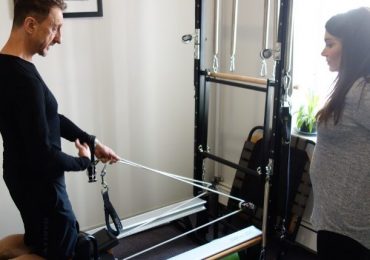Find the Best Physiotherapist
Finding the best physiotherapist and physiotherapy treatment can be a bit daunting. It is difficult for patients to know what to look for when they have an injury or condition that requires treatment. Most of us like to have a personal recommendation and then do our own internet research. In this blog I outline four things to look for to find the best physiotherapist for you. This is based on what I feel are best practices in the physiotherapy profession.
Does the physiotherapist take the time to listen to you?
Spending time to listen to your story is the key to diagnosing the problem. When we listen to you describing your symptoms and how they are triggered, we are able to use this information to guide the treatment plan. A good physiotherapist will give you ample time to tell your story and not rush you.
Ask yourself, how does the therapist make you feel? Do they make you feel like you are in a safe and private environment? I am not a fan of the open-plan clinics where there is very little privacy for disclosure of personal information. You should also feel like you have been given the time to ask questions about the assessment and treatment. Don’t rush into signing consent forms. Ask the therapist about the type of treatment they are recommending for you.
Above all, all information you give us is relevant and should be welcomed by your therapist.
READ: What Makes Pilates and Physiotherapy so Effective?
Are you being offered a recipe approach?
There is absolutely no recipe approach for treatment of any injury. Not even a minor ankle sprain warrants a standard set of exercises. At the end of your assessment the physiotherapist should provide you with a treatment plan. Some patients are told they require 10 sessions of one particular treatment. An example of this includes 10 sessions of traction or 10 acupuncture treatments. Most injuries don’t respond well to this approach and really require a combination of different treatment techniques. Most muscle/joint injures require a mechanical-based solution. This should involve some hands-on techniques as well as corrective exercise. The exercises should be geared to your body and change depending on how you respond. They should be progressed so that you can return to your normal activities and sports.
Is your therapist treating the cause and not just your symptoms?
Very few injuries and conditions can be treated in one or two visits. Most symptoms are a response to tissues and nerves becoming overloaded. This overload process has usually been going on for some time before the symptoms appear. As a result, your treatment should address the cause of the problem. Your therapist should be able to explain the ’cause’ after the your initial assessment. The best physiotherapy treatment plan will incorporate both symptom control and treating the root cause. A common example I see in the Downtown Toronto population is neck pain. The environmental cause is usually obvious; long hours siting in front of computers. When we did deeper, we find most clients have very stiff mid-back joints, causing the head and neck to protrude forward. Symptoms can include headaches, pain and tingling from pinched nerves and painful trigger points in the muscles.
The best approach to this is to treat the stiff thoracic spine. Pilates is ideal for this as the exercises can focus on regaining the mobility in the spine. The equipment allows us to target the muscles, joints and fascia so that we can change your alignment. Pilates is ideal for many of these postural-based conditions. It also works well for most sports injures such as muscles strains and joint sprains. The equipment allows progressive strengthening without over-loading the injured area.
READ: Sit or Stand at Work?
Trust your instincts
You have to feel that you are being taken care of by your physiotherapist. I am not a fan of patients being transferred to clinic assistants to do their exercises or perform other treatments. If you are only seeing your therapist for 15/20 minutes and being sent to an assistant, you are on what I call the ‘physiotherapy production line’.
You should have a clear idea of what the treatment plan is. This may have to be adjusted depending on how you respond, but you should be informed of the overall direction. The best Physiotherapy treatment plan should make sense to you, based on your injury and the history of the condition.
At the end of the day you have to give a treatment plan a chance. Many of us get pulled into the quick-fix mentality and then don’t deal with the root cause. I strongly advocate a balanced treatment plan that deals with symptoms using a manual therapy approach. For the root cause you cannot beat Pilates as a rehabilitation technique. The best approach is to find a physiotherapist who can provide the rehabilitation on the Pilates equipment. It really is a powerful and effective tool when combined with the clinical reasoning in physiotherapy.
Damian Wyard is the founder and owner of Pilates4Physio. He runs a physiotherapy clinic in Downtown Toronto, specializing in Pilates-based rehabilitation. He treats a multitude of conditions and injuries using manual therapy and the classic Pilates equipment. This includes the reformer, stability chair and tower trainer. For further information you can contact us on our website at pilates4physio.ca



